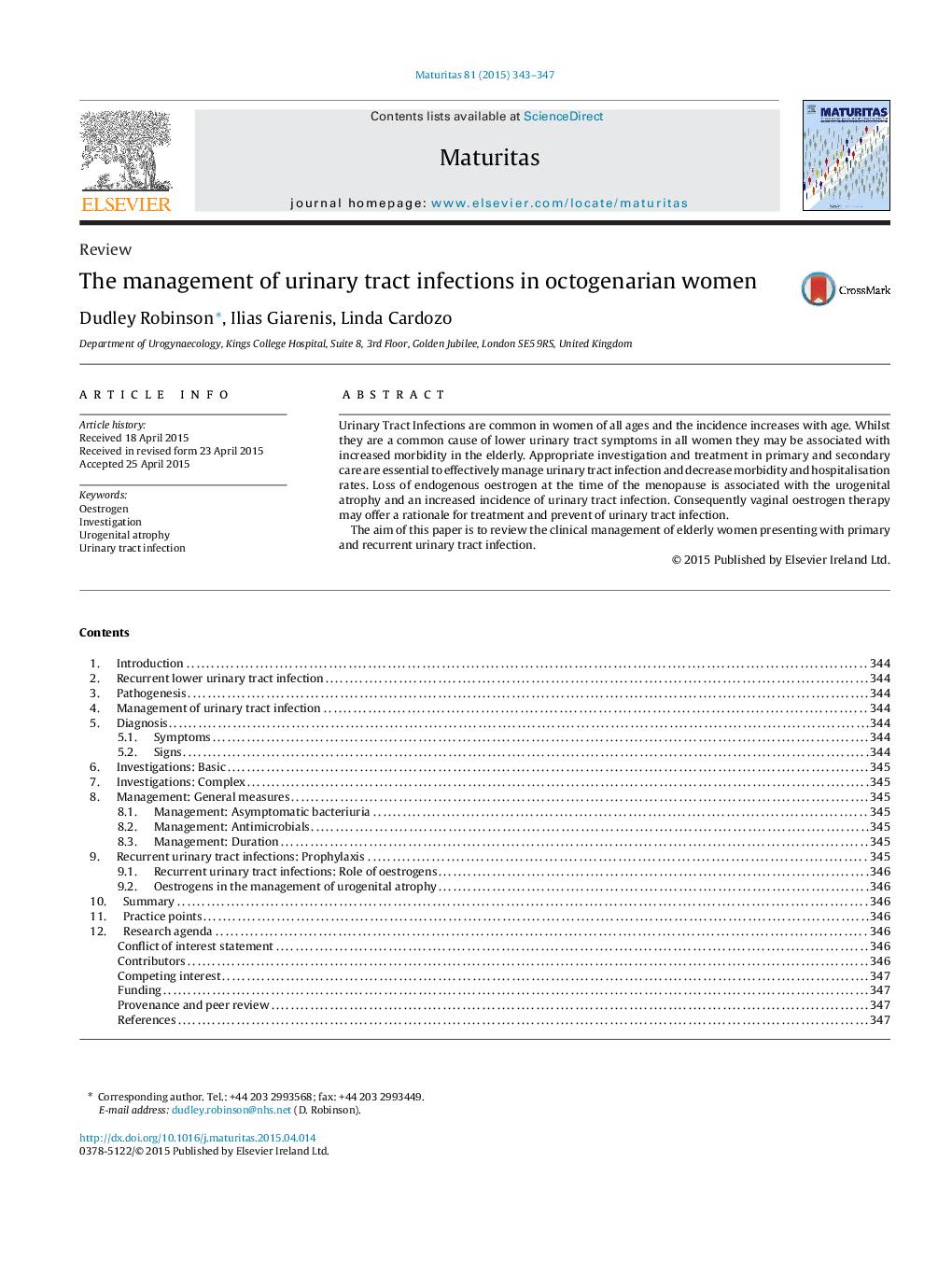| Article ID | Journal | Published Year | Pages | File Type |
|---|---|---|---|---|
| 1917112 | Maturitas | 2015 | 5 Pages |
•Lower urinary tract infections are a common cause of morbidity in the elderly.•Increased incidence in the elderly is associated with urogenital atrophy.•Community-acquired infections may be caused by different organisms from those acquired in hospital.•In the majority of women with uncomplicated cystitis, there is no indication for further investigation.•Cases of complex or recurrent infections should be investigated appropriately.•No indication for therapy for asymptomatic bacteriuria in the elderly.•Antimicrobial therapy should be based upon culture and sensitivity results, although often initial treatment is on a ‘best guess’ basis.•Short course and low-dose antibiotics may be used as prophylaxis and reduce infection rates by 95 per cent, compared with placebo.•Low dose vaginal oestrogens have an important role in the management and prophylaxis of recurrent urinary tract infections in the elderly.
Urinary Tract Infections are common in women of all ages and the incidence increases with age. Whilst they are a common cause of lower urinary tract symptoms in all women they may be associated with increased morbidity in the elderly. Appropriate investigation and treatment in primary and secondary care are essential to effectively manage urinary tract infection and decrease morbidity and hospitalisation rates. Loss of endogenous oestrogen at the time of the menopause is associated with the urogenital atrophy and an increased incidence of urinary tract infection. Consequently vaginal oestrogen therapy may offer a rationale for treatment and prevent of urinary tract infection.The aim of this paper is to review the clinical management of elderly women presenting with primary and recurrent urinary tract infection.
